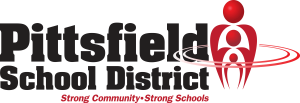The school corridors had been more crowded than usual at PMHS in mid-November as our Student-Led Conferences (SLCs) have been in full swing. As PMHS parents know, since the beginning of the last school year, PMHS replaced the traditional—and sometimes dreaded—parent-teacher conference with a relatively new model of understanding and appreciating student progress.
Every fall and spring, parents are invited into PMHS not to hear about their children from the teacher, but rather to hear directly from their children, who each take the lead role in a presentation that articulates his or her academic, personal and social development. Each student creates a portfolio that contains a collection of work, reflections, and evidence of their growth over time. The portfolio is shared with the parent and teacher during the Student-Led Conference and essentially becomes a tool for an ongoing conversation during a student’s middle and high school years.
At PMHS, a student portfolio contains five sections, each of which serves as a jumping off point for discussion:
- Personal Learning Plan (PLP) – a learning plan to guide the personal, social, academic growth and school experience of the student. A PLP can be up to 50 or 60 pages long, with an eight-page summary snapshot.
- Competencies – examples of assessments that reflect the strengths and/or weaknesses of the student across a number of competency and skill areas that reflect the subjects being studied at the time.
- Advisory – reflections on assignments and/or courses and college and career readiness work.
- 21st Century Learning Expectations – rubrics or measures that demonstrate student progress in the area of 21st Century skills. These skills include oral and written communication, analysis and synthesis of data, problem solving, creativity, collaboration, and technological know-how.
- Who Am I? – a collection of additional materials that serve as a resource for the student to reflect on his/her school experience, his/her community service, and his/her personal growth.
Portfolios and Student-Led Conferences are two key strategies employed by many forward-thinking school districts across the country aiming to increase student engagement and motivation, thereby improve student performance. PMHS’s involvement dates back several years, when the district first began thinking about how best to realign our Pittsfield Schools with the needs and demands of a 21st Century global society. According to PMHS Teacher Derek Hamilton, a group of teachers visited the highly-respected Francis Parker Essential Charter School in Devens, Massachusetts, and drew inspiration from the students there, who talked about their portfolios and “gateway presentations,” highlights of their learning that are shared with the community at large.
The PMHS delegation came back to Pittsfield ready to embark on a journey of discovery. As one of several faculty focus groups exploring new ideas in education, this group determined that the Student-Led Conference was a way to braid a lot of the new ideas that were emerging into a single strand. Hamilton piloted the effort with his Advisory class and conducted the first faculty training. Since that time, every classroom teacher at PMHS has been trained and participates in Student-Led Conferences.
In addition, last year, 93 percent of our students conducted a Student-Led Conference; we hope the data will soon show that we’ve surpassed that number this year. Moreover, whereas parent participation in traditional parent-teacher conferences typically registered at about 20 percent, Student-Led Conferences have brought 90 percent of our parents into the building. “Many parents haven’t had a lot of trust and faith in the faculty and programs at the school,” Hamilton said. “(Student-Led Conferences) are helping to build a sense of trust over time.”
After each “window” of Student-Led Conferences, PMHS faculty members survey students, parents and teachers for feedback. Though some students have said they felt forced out of their comfort zone and would prefer to return to the traditional conference, the majority of students have embraced the new model.
A sampling of student responses demonstrates how students feel about the SLC:
- “It gives me the ability to discuss college plans with my parents and advisor.”
- “It gives me the opportunity to talk with my parents about my grades and other things I don’t usually talk to them about.”
- “It gave my parents a better understanding of competencies.”
- “It makes me feel better prepared for when I go on a job interview.”
- “I was able to lead the presentation and share work.”
Parents also reported what they found most valuable about the SLC:
- “Hearing my child speak and my child’s viewpoint.”
- “The SLC builds confidence and maturity.”
- “My child is learning to explain himself without bragging.”
- “I love to see my son lead his conference and show pride in his work and accomplishments.”
- “It allowed me to see that a letter grade did not totally show his efforts.”
- “My child did the work, not the teacher.”
For the faculty, the SLC continues to be a work in progress, whether it’s continuing to clarify its purpose and value, providing additional training to faculty, or tweaking the schedule and grading practices. And this year, students are required to invite a second adult—a teacher, administrator, paraprofessional, or school secretary—to participate in the Conference. It’s part of an effort to prepare students for presenting in front of a much larger audience.
One testament to the success of Student-Led Conference is the reaction of seniors to videotapes of their SLCs from years past. Hamilton said: “They say ‘Wow, that was me as a sophomore!’ They are so much more polished and prepared. They know the agenda and know what they’re supposed to share.”
